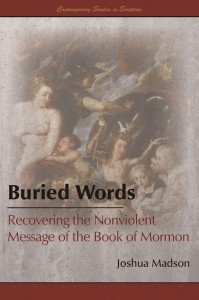
As an instructor teaching classes in Bible and even the Book of Mormon at the University of Utah, I have frequently had to address the genre of scripture with my students. The topic is an important one in Religious Studies.
Back in 2003, University of Chicago Egyptologist Robert Ritner published an article in the Journal of Near Eastern Studies on a segment of the Joseph Smith papyri used to produce the LDS Book of Abraham. Even though I am grateful for the contributions Ritner has made in analyzing this material from a professional Egyptological perspective, as both a believing Latter-day Saint and an academic, I was disappointed that when discussing the Book of Abraham, Ritner placed the word scripture in quotation marks, implying that the book is not what Latter-day Saints believe, i.e. the scriptural word of God.
Regardless of whether or not Ritner believes that the Book of Abraham is inspired, the text is part of the LDS canon. It is scripture to Latter-day Saints, and in a professional academic venue such as the Journal of Near Eastern Studies, scholars should employ bias-free language. For example, since not every religion that accepts the material in the Christian Old Testament believes in the New Testament, in academic speech, scholars typically use the term “Hebrew Bible” for this collection.
It is not appropriate for a scholar discussing a sacred text to state or even imply that a religious work is not scripture. The Quran is scripture to the Muslim people, the Vedas are scripture to Hindus, and the Book of Abraham is without question scripture to Latter-day Saints.
This does not mean that when these texts are taught in an academic context, they should be taught as scripture. Whereas a Religious Studies course can study the way a particular group defines scripture, academic courses at state universities should not privilege one particular scriptural approach over another. The Bible, for example, can be taught from a historical-critical perspective. This is the label that we often use for mainline biblical scholarship. The historical-critical method seeks to read the text “historically,” meaning in accordance with its original historic setting, and “critically,” meaning independent from any contemporary theological perspective or agenda. Rather than inspired “scripture,” this academic approach takes the Bible as a “real” book with inconsistences and a unique cultural context. This approach is not anti-religious, but it is academic, and given the variety of beliefs concerning divinity and what is or is not the word of God, the historical-critical method allows for the widest latitude of participation in studying sacred literature.
All of this brings me to a consideration of the recent Deseret News article by William Hamblin and Daniel Peterson titled, “What is Scripture.” The article was published on January 9th, 2015. Though I agree with much of what the authors wrote, I strongly disagree with their characterization of “liberals” versus “conservatives.” The authors state that “conservatives” define scripture as revelations revealed from God, whereas “liberals” use the term “scripture” in reference to texts that a community defines as sacred.
This is not an accurate characterization. In their essay, the authors confuse an “academic versus devotional” approach for a “conservative versus liberal” reading. All believers, whether “conservative” or “liberal,” accept sacred text as “scripture.” That’s what makes them believers. For instance, as a believer teaching a course on the Bible in Sunday School, I will refer to the text as scripture. Yet when teaching the Bible in a state sponsored university setting, I may refer to the collection as either Jewish or Christian scripture, but I will not teach that it is scripture revealed from God. Our separation between Church and state does not allow instructors to privilege or promote a specific religious view.
As an academic, it would be wrong for me to state, for example, that Warren Jeffs’ Message to All Nations is not “scripture.” Despite my own personal beliefs, Jeffs’ work qualifies as scripture in terms of genre since it is accepted by Jeffs and his religious community as the inspired word of God. In the same way that it was inappropriate for Robert Ritner to bracket the term scripture in his description of the Book of Abraham, it would be unacceptable for me in an academic context to state that Message to All Nations, the Vedas, or the Quran is not scripture. In terms of genre, they are scripture, regardless of my own personal beliefs.
Hamblin and Peterson, in fact, violate their own “conservative-liberal” distinction when they teach the Quran as scripture, which as Latter-day Saints they don’t really believe is comparable divine revelation to the material in their own LDS cannon, unless, of course, the authors are not “conservatives” and therefore, according to them, must interpret their own scripture as simply a social construct.
In reality, what Hamblin and Peterson characterized as a “liberal versus conservative” approach is a “devotional versus academic” reading. It’s not a matter of either/or. The two definitions of scripture identified by Hamblin and Peterson simply belong to different spheres: one the church or synagogue, the other the academia.











